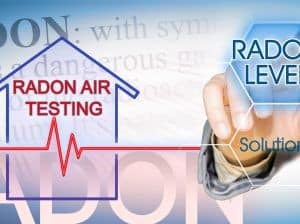
Radon is an invisible and odorless gas that occurs naturally and can pose a risk to many households. The gas seeps into homes through the foundation. Prolonged exposure can cause serious health risks, especially in the elderly. If you have a senior living alone, you may want to know some of the best ways to get rid of radon risks in their home.
Test Your Home for Radon Levels
The first step to reducing radon risks is to find out if you have a problem to begin with. Radon is a naturally occurring gas, and it helps to know how to identify the major sources of radon in most homes. Start by testing your home’s radon levels. There are two types of radon tests available: short-term and long-term. Short-term tests typically provide results within a week, while long-term tests can take months.
Short-term tests are better if you simply want to confirm the presence of radon, while long-term tests can give you a more accurate reading to determine the severity of the radon levels. Investing in a long-term test can help alleviate concerns about the hazards facing your elderly relatives and is a great way to ensure they’re safe. The more you know about their living situation, the safer you know they’ll be moving about on their own.
Seal and Repair Cracks and Openings in Your Home’s Foundation
One of the most effective ways to limit radon exposure is to prevent it from entering your home in the first place. To do this, carefully inspect your home’s foundation, basement, and crawl spaces for cracks, gaps, and other openings. Seal any identified cracks or openings using a specially formulated radon-resistant sealant. To help protect seniors even further, we recommend installing a vapor barrier over any exposed dirt or gravel floors in basements, crawl spaces, or similar areas. These barriers help limit the amount of natural radon that can seep through the ground.
Increase Ventilation and Lower Radon Levels With a Radon Mitigation System
There are several techniques that can help reduce radon levels in your home, but one of the most effective is to install a radon mitigation system. These systems use a combination of fans and pipes to safely ventilate radon-contaminated air from under your home to the outside. When properly installed and maintained, a radon mitigation system can significantly lower radon levels and provide you with peace of mind.
Educate Yourself and Your Neighbors About Radon Risks
Radon awareness is essential to reducing risks on a community level. By educating yourself, your family, and your neighbors about the dangers of radon exposure, you can work together to create a safer environment for everyone. Share this blog post and other resources with those around you and encourage them to test their homes for radon and take the necessary steps to get rid of this invisible threat.
Now that you know how to get rid of radon risks in your home, you can start helping the senior in your life make changes that prevent against radon exposure.